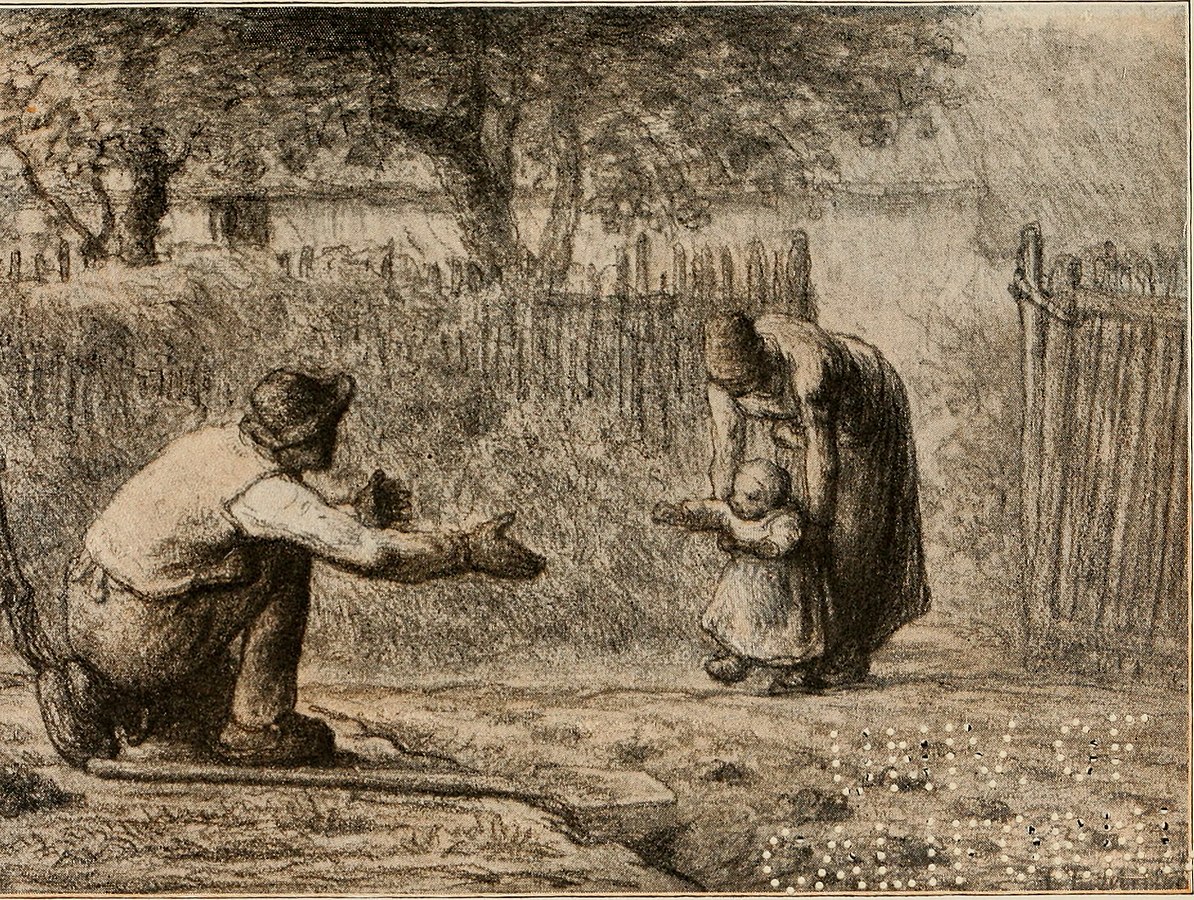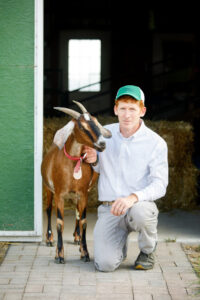During the driest part of May, I ran through a smooth brome field every day at lunch. Usually, brome in May is an amazing sight: thick, dense, and dark green. This year, it was stubby, thin and hard to look at. The drought was so pervasive that the massive amount of urea that had been put on the field simply had no effect.
About a mile north of that field is another brome meadow, but this one is in the dappled shade of locust trees. I walk there with my dog often. In this meadow, the same grass species was thick and tall, with lush blades, and even as the locust trees began to bloom, it radiated health. The diverse root systems of trees and grasses had stored water in September, and that water was now allowing this grass to thrive despite the drought. Diversity has a capacity to handle times of stress that monoculture does not.
In the summer of 2019, a customer, a local minister on sabbatical, stopped by my office to chat. We started talking about where he was from and how he grew up. He talked about growing up in a rural community in Eastern Kansas and described the assumptions people held there. He remembered a sort of dark resignation as the Green Revolution had washed over the farming community, solving so many problems but also bringing increases in cancer and other, stranger illnesses that people attributed vaguely to chemical exposure, though no direct link could ever be proven. He noted that his generation, born in the 60s and 70s, joked about cancers and weakened immune systems as if they were just an inevitable part of living the farm life with chemicals that no one understood and no one could avoid because they were so ubiquitous.
In 2021, I got an email that this customer, a man of middle age in good health, had died due to complications with Covid, and I wondered about our conversation. The Green Revolution, with its chemicals, higher yields, and simpler solutions, was more than a farming system: it was a new culture that changed rural America. I am not sure which to fear more: the chemicals or the culture they brought. But this much is true: rural America is not healthy, and we must ask more subtle questions about farming methods, questions like “will this way of doing things be healthy for our community?”
In late August, I turned into a farmyard in Iowa. It was orderly but not fastidious. As I stepped out, I saw flies lazily combing the concrete around the buildings, harvesting all the scraps of an animal operation. The farmer came slowly out of the house. He’d just sent his son off to college, and had gotten a late start on the day. We talked about many things. His experience of 50 years was, to me, a priceless trove of information. I mentioned that our organic alfalfa producer could not fulfill half of our usual hay order because of drought. I said I might have to just buy conventional or GMO alfalfa if I could find nothing else. He looked at me kind of lazily and raised his eyebrows. “I would never feed hay sprayed with Roundup to an animal of mine,” he said. I told him I didn’t want to and that we were trying not to, but Lord, everyone says it’s perfectly safe. “You do what you want, but I will tell you a story.”
He went on to relate what happened on his farm around 2007, when Iowa began adopting GMO alfalfa, which was sprayed directly with Roundup. He spoke of a 3-year period where the incidence of abortion in his herd started rising. He talked about inconsistent estrus cycling and hormonal disruption causing havoc in his kidding barns. He finished by saying, “I stopped feeding anything touched by Roundup, and they all went back to normal.” I looked at him, knowing that the accepted science would say he was a liar. And I wondered if his story was true. He raises his own hay, feeds only non-GMO grains to his herd, and has excellent production and few health issues.
He finished his jeremiad with another story: “Last week, some neighbors up the road were walking one evening on a public road when a spray rig started applying in the field next to them. The drift was enough to set them coughing, and the wife began bleeding out of her ears and eyes. I don’t think those chemicals belong on our feed.” I asked him if he thought organic grains had actual potential, and he said, “Go look at the bean fields around the Mennonites; they take their kids out in the cool of the evenings and pull pigweeds. It works, but how are you going to convince a country as lazy as ours to work like that? Most people would rather have the poison around.”
I was on the phone recently with a man who ran a retail food business worth hundreds of millions, and I was asking him questions about his perspective on the food system. I asked him if he thought Roundup was a problem. He paused and said, “Yes, it’s a problem; herbicides are a problem, antibiotics are a problem, insecticides are a problem. Not that they exist, there are times for extreme interventions, but the fact that they are so prevalently used speaks to what we have demanded of the farmer and how little room we have given him to learn ingenious ways to avoid the chemicals.” Then he went on to say, “It’s insane; we’re telling farmers they must execute this brutal monoculture regime on the land to feed the world, but around 40% of our corn crop in the United States is used for ethanol, which is a poor exchange for the draining of aquifers, the destruction of diversity, and declines in soil health which are being carried out.” Let alone the fact that we waste 40% of what is grown as food because we have an unhealthy food culture.
Yesterday, I walked with a friend for a while in the cool afternoon. He is in a potential job transition, and it’s not easy. My work is in a hard place also, and I understood what he was feeling. He said, “Sometimes, and I know it’s not true, but I fear that if I make a bad decision right now, it might cost my family, and so I fear making long-term careful decisions because I am afraid of being a poor husband.” I thought about that. I told him to remember that he is not alone. He is part of a diverse community that can help supply what he needs for health, the breathing room to make good long-term decisions from wisdom instead of shortsighted decisions from fear. He played me Oliver Anthony’s song “Rich Men North of Richmond.” It captured how profoundly alone we can all feel. That aloneness is so profoundly humiliating, and the anger it causes is natural. Still, I think the challenge for us is to be with one another in that anger, see it for what it is, and somehow steer it to serve the community, to turn it into love.
I think many of us feel pushed into anger and fear in our communities. I believe we can respond by fostering relationships and building diverse communities, which in times of stress are capable of things monocultures or isolated individuals are not. This looks like living with less, mainly because our version of living with more is not lovely. We need to love smaller, more energy-efficient houses and cars in order to love people more. We need to give up much of our casual oil consumption for leisure. We need to love being a little hungry now and then to avoid food waste. We need to create ways of leisure that are joyous and productive, instead of “drowning our troubles away,” as Anthony says. We need to stop investing in fast food and making money on the obesity crisis by holding stock in Coke, Pepsi, McDonald’s, or Chick-fil-A.
The great lie used to justify how we are farming is that “we have to do it in order to feed the world.” That story is false. This lie is what justifies cruelty to the environment and to animals. This lie is what justifies the massive overuse of chemicals and antibiotics. This lie is what is used to justify draining the aquifers and polluting the rivers. If feeding the world were the real issue, we would not use 40% of our corn crop to make ethanol and we would not waste nearly 40% of our food.
Farmers fear doing things differently because they fear it might mean their family has less or that they are a failure in their community. Farmers are pushed to use chemicals they don’t fully understand, to drain aquifers, to confine animals to live in their own excrement, all because “we need to feed the world.” If that’s true, let’s stop burning ethanol, let’s reduce food waste by 10%, and let’s support agriculture that is less intensive and more ecologically sensitive. We know how. We have more than enough land, it’s about what story we believe. Let’s say no to pumping the aquifers dry to sustain waste. Let’s stop wasting 40% of our food. Let’s stop telling farmers they don’t have time to make long-term decisions and empower them to act in wisdom and love, not in fear. And let’s go out on summer evenings to cut hay or pull weeds and teach our children how joyous sweat can be and how much better a life of labor is than one of electronic entertainment.
When we have done that, I think we will have enough grain to feed the hungry in the world. We might have enough time to build a food culture and habits of the table that do not leave the obese with insulin dependency like refuse along the road to progress.
Listen to Oliver Anthony crying out in protest in “Rich Men North of Richmond.” After listening to that, tell me: will you demand that men act in fear, alone, desperate enough to use poisons they do not understand, or will you encourage them to work slowly, with wisdom, to sweat with their children, and in humility to find joy by choosing love?
The figures about what percentage of arable acres are used to produce ethanol have been corrected and clarified.
Image credit: via Wikimedia Commons






5 comments
George Elder
Thanks Martin, you are correct, the piece should read “Around 40% of our corn crop is used for ethanol.” Appreciate the correction!
And food waste cannot be eliminated but could be significantly reduced if it were a priority. I think a reduction by 10% is feasible.
Cheers !
Martin
This is an excellent weave of personal encounters, hope, and economic criticism.
Some of the facts are questionable. For example, Dept of Ag says the # bushels of corn used for ethanol has been flat since 2010 and the fraction is 35% of total.
https://afdc.energy.gov/data/10339
I doubt other grains are being used even close to that proportion. Sure, burning out food is idiotic in the context of human history, but “50% of acreage is for ethanol” sounds like the exaggeration strategy promoting the debunked “eat less meat to save the planet” ideology :
https://www.youtube.com/watch?v=sGG-A80Tl5g
The video discusses “food waste”. For example, 85% of animal feed is not human edible, so why would it count as waste? What else should we do with corn husks, oat hulls, and other crop byproducts? Ok, that’s not what George means when writing “we waste 40% of what is grown as food” — he’s referring to the waste of what humans can consume as food.
In the last couple minutes, the video notes that 1/3 of all the world’s food is wasted and confirms George’s figure of 40% for the U.S. population. But how much can we reduce it? Should you buy bananas one by one to avoid having any rot on your table? Can orchards ever achieve 100% efficiency of harvesting only the ripe fruit each day, so none fall to the ground and rot?
No, but we can certainly improve. Consider resisting the smiling “upsize” pitch that fast food managers force their counter employees to push (even after I indicate exactly what I want in my order), especially if you find yourself throwing some away when you realize your eyes are bigger than your stomach.
Russell Arben Fox
Profound thoughts, George–and it’s so good to see another friend here on the Porch!
Ray Stevens
Just a comment for anyone out in the hinterlands who may not know what is the next big thing “North of Richmond”, it is Washington DC!
That is not just the “godam gummint”either. It is the swarm of greedy, hateful, ignorant America there to see that nothing will ever be done to change the awful mess my country has degenerated into since WWII.
Note: I was born in DC during the depression and lived thereabouts most of my life.
Ray Stevens
Martin
I think the song refers to all east coast cities north of Richmond: DC, Philly, NY, Boston.
Comments are closed.